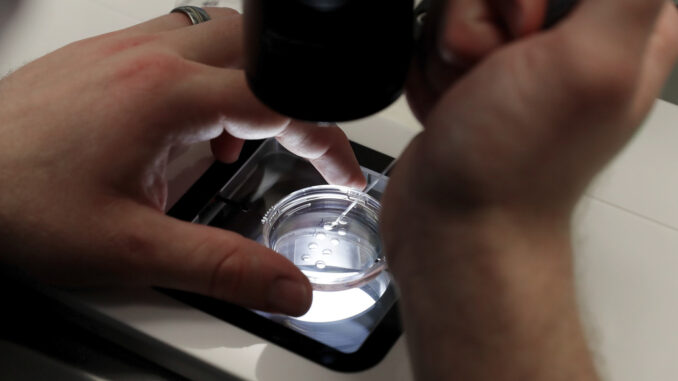
There is confusion on what a human embryo is. It is not sperm. It is not an egg. The very first two sentences of “The Developing Human — Clinically Oriented Embryology, (2nd ed 1977)” by Keith Moore states:
“Development is a continuous process that begins when an oocyte (ovum) is fertilized by a spermatozoon and ends at death. It is a process of growth and differentiation which transforms the zygote, a single cell, into a multicellular adult human being.”
No new science has changed that truth in the last 50 years. What is the law here?
North Carolina law on unborn children is not confused. N.C. Sen. Bill 20 (2023) makes lawful abortions up to the 12th week of pregnancy with limited exceptions. Without that law and its Roe v. Wade predecessor, the criminal law would be the same as common law.
In 1859, the American Medical Association unanimously adopted a resolution “condemning abortion at every period of gestation, except as necessary to preserve the life of mother or child.” The reason: the increasing frequency “of such unwarrantable destruction of human life.”
The common law (as of 1776, and probably as of 1669) made abortion a crime from conception. “The moment the womb is instinct with embryo life and gestation has begun . . .” the crime may be committed (1880)
N.C. civil law also considers the unborn child to be protected from the time of conception.
The law of North Carolina is that the property, real and personal, of one dying without a will immediately vests in a child en ventre sa mere. In 1823, the statute clarified: “[n]o inheritance shall descend to any person, unless such person shall be in life at the death of the person last seized, or shall be born withing ten months after the death of the person last seized.” Ten lunar months is 280 days. A child, once conceived, could take a property interest under a will to “children.” (1839)
An 1854 statute states that “[a]n infant unborn, but in esse, (in existence) shall be deemed a person capable of taking by deed as if he were born.” Note the words “infant unborn.”
For all purposes beneficial to her, the unborn child was protected by the civil law. Law and biology were consistent and considered the child in the womb to be within the protection of law from conception.
There is confusion between abortion and IVF.
In either abortion or IVF, the intention includes the destruction of a living human being. Of those embryos created by IVF, most are to be discarded, and only one or two are intended to be implanted and proceed to birth.
There are differences. The obvious one is size. Another is pain. I am not aware of evidence that the embryo at one week has the capacity to feel pain. There is capacity for the unborn child to feel pain somewhere between 10 and 15 weeks after fertilization.
On the other side, the destruction of most of the embryos in the IVF procedure is morally worse than the abortion of the child in the womb. How so? The usual reasons stated for abortion do not apply. The woman seeking IVF has not been impregnated by rape or incest. Neither her life nor her health are in any danger. By definition, she wants at least one of these children and can afford to raise her. The child will not interfere with her career or education nor, as the U.S. Supreme Court said in 1993, interfere with her consideration of the mysteries of existence and her place in the universe.
I suppose that if IVF were accomplished by creating one or two embryos and implanting them, some of the moral objections would be less powerful. The general practice is to create multiple embryos in the test tube, test them, implant one or two and destroy the rest.
Those with a historical or biblical turn of mind might study the first chapter of Luke, written by a historian. When Jesus was about 8 days old (in Mary’s womb) his cousin, John the Baptist, leapt for joy because John was in the presence of the Messiah (John’s mother was in her sixth month).
Embryos are plentiful. They are not worthless.
